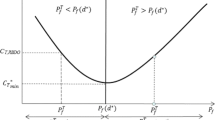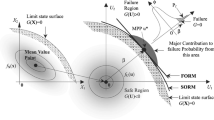Abstract
Statistical process control procedures are widely applied to improve the production efficiency of industrial products. Application of quality control procedures in monitoring the production, delivery, and construction process are essential, especially when the historical data collected on various projects can be used to gain better insight to the operational procedures. Such information will promote interaction; reduce the liabilities and benefits the owners and suppliers if any of the design parameters that are below the minimum requirement can be identified as soon as possible. The longer time it takes to detect discrepancies in the data, the more the penalty, project delays, and the higher the associated costs to the owners and suppliers. A detailed analysis of the test results of flexural closed-loop control test data conducted in accordance to ASTMC1609 test is conducted for QC requirements of precast segment in tunnel lining project. More than 378 production samples are recorded. The data set contained 1 day (demolding age) and 28 days of molding. The statistical process control and the range of the data are studied in the context of material properties as well as back-calculation of the tensile parameters. The number of parameters evaluated includes flexural strength and deflection at ultimate flexural strength, the residual strength results at L/600, L/300 and L/150. A series of statistical analysis procedures to analyze the correlation of the parameters and addressed the combination of control charts for early detection of spurious shifts in the mean of the test data (out-of-control signal).
Access this chapter
Tax calculation will be finalised at checkout
Purchases are for personal use only
Similar content being viewed by others
References
Sykora, V.: Amendment of appendix X2 in ASTM C 917 evaluation of cement uniformity from a Single Source. ASTM-Cem. Concr. Aggregates 17(2), 190–192 (1995)
Montgomery, D.C.: Introduction to Statistical Quality Control. John Wiley & Sons, NY (2008)
Laungrungrong, B., Mobasher, B., Montgomery, D.: Development of rational pay factors based on concrete compressive strength Data. SPR 608 Arizona Department of Transportation, AZ (2008)
Leshchinsky, A.M.: Combined methods of determined control measures of concrete quality. Mater. Struct. 24(3), 177–184 (1991)
Bakhshi, M., Laungrungrong, B., Bonakdar, A., Mobasher, B., Borror, C.M., Montgomery, D.C.: Economical Concrete Mix Design Utilizing Blended Cements, Performance-Based Specifications, and Pay Factors, FHWA-AZ-13-633, Final Report 633, May 2013
Laungrungrong, B., Mobasher, B., Montgomery, D.C., Borror, C.M.: Hybrid control charts for active control and monitoring of concrete strength. ASCE J. Mater. Eng. 22(1), 77–87 (2010)
Day, K.W.: Concrete Mix Design, Quality Control and Specification, pp. 82–85. Taylor & Francis, New York, NY (2006)
ACI 214R-11 Guide to Evaluation of Strength Test Results of Concrete (2012)
Zaman, B., Abbas, N., Riaz, M.: Mixed CUSUM-EWMA chart for monitoring process dispersion. Int. J. Adv. Manuf. Technol. 86, 3025–3039 (2016)
Author information
Authors and Affiliations
Corresponding author
Editor information
Editors and Affiliations
Rights and permissions
Copyright information
© 2021 RILEM
About this paper
Cite this paper
Pleesudjai, C., Patel, D., Bakhshi, M., Nasri, V., Mobasher, B. (2021). Applications of Statistical Process Control in the Evaluation of QC Test Data for Residual Strength of FRC Samples of Tunnel Lining Segments. In: Serna, P., Llano-Torre, A., Martí-Vargas, J.R., Navarro-Gregori, J. (eds) Fibre Reinforced Concrete: Improvements and Innovations. BEFIB 2020. RILEM Bookseries, vol 30. Springer, Cham. https://doi.org/10.1007/978-3-030-58482-5_72
Download citation
DOI: https://doi.org/10.1007/978-3-030-58482-5_72
Published:
Publisher Name: Springer, Cham
Print ISBN: 978-3-030-58481-8
Online ISBN: 978-3-030-58482-5
eBook Packages: EngineeringEngineering (R0)




